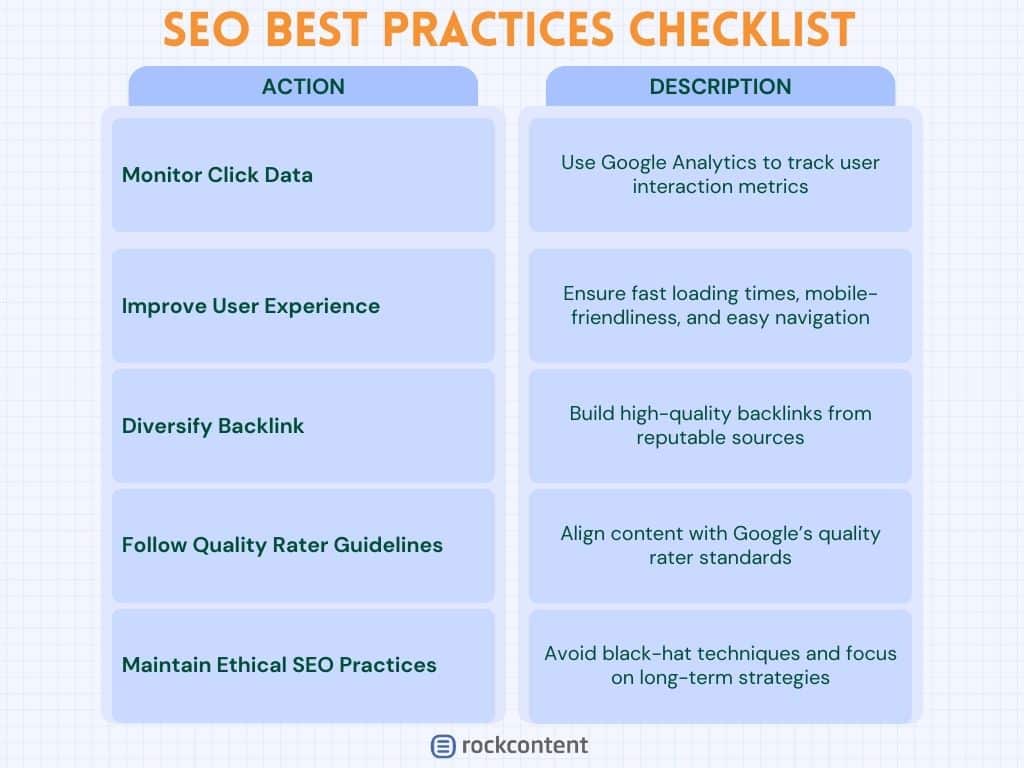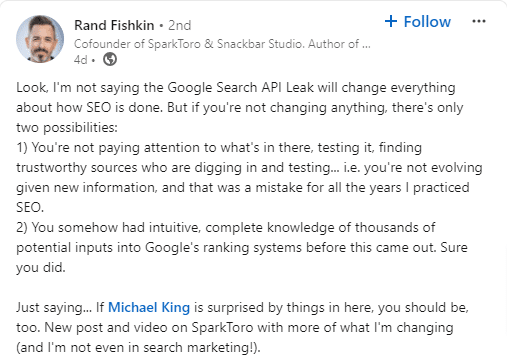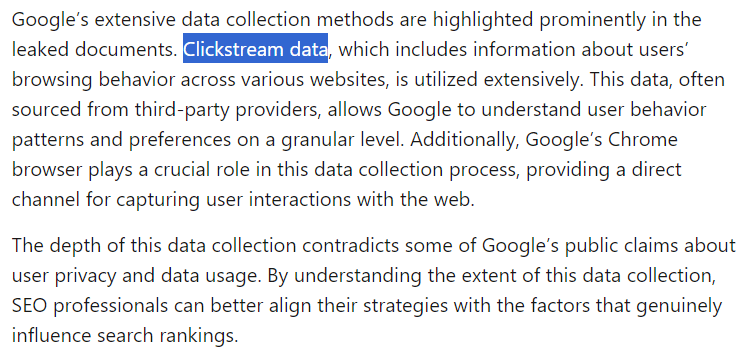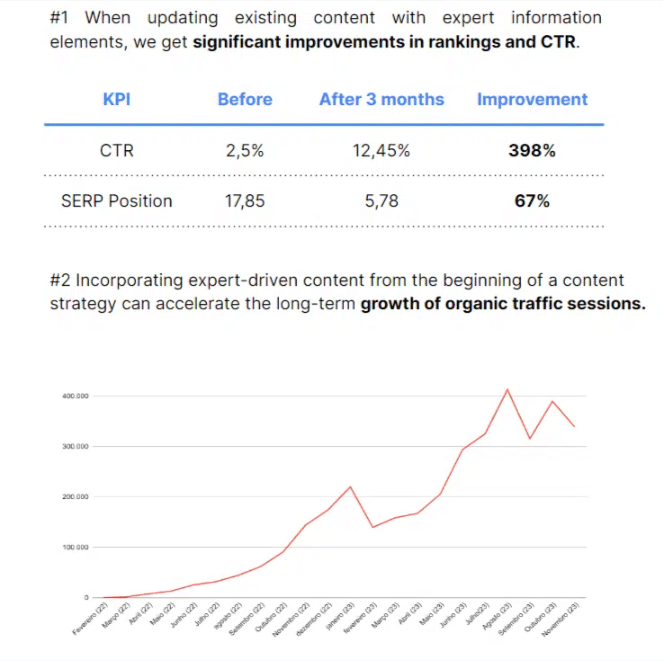Let’s talk about something big that happened in the last few days. The SEO community was buzzing with excitement and a bit of shock because some internal Google documents were leaked. These weren’t just any documents—they were part of Google’s Search API, packed with details about how Google’s search engine works behind the scenes. For those of us in SEO, it felt like finding a secret treasure map.
So, why is this such a big deal? Well, for years, we’ve been trying to figure out exactly what makes Google tick. We’ve had some clues and a lot of educated guesses, but these leaked documents give us solid info about what Google actually looks at when ranking websites. It’s like getting a peek into the mind of the wizard behind the curtain.
- Context of the Leak
- What Was Leaked
- Examples and Modules
- Implications for SEO Professionals
- Our Point of View
- Critical SEO Insights for Marketers from the Google Leak
- Wrapping Up
Context of the Leak
To really understand how important this leak is, let’s take a quick trip down memory lane. There have been a few times when bits and pieces about Google’s algorithms slipped out, but nothing quite like this. Remember the Yandex search engine leak back in 2015? It gave us some hints about search algorithms, but it was nothing compared to the detailed info we have now.
SEO experts have highlighted the significance of these leaked documents, calling them a game-changer for understanding Google’s ranking systems. These documents offer unprecedented insights that can help SEO professionals refine their strategies based on solid data. And they’re right. These documents open up new ways for us to fine-tune our strategies based on real data.
And it’s not just about the sheer volume of information. Previous leaks were often fragmented and less detailed. This time, we’ve got everything from how Google uses Chrome clickstream data to the existence of whitelists for certain sectors like travel, COVID, and politics. It’s a goldmine for anyone serious about SEO.
What Was Leaked
Alright, let’s dive into the juicy details of what exactly was leaked. These documents from Google’s Search API are like a behind-the-scenes pass to see how the magic happens. They reveal a lot about how Google ranks websites and what factors come into play.
First off, here’s a quick overview of the types of data that were leaked:
- Search Ranking Factors: Detailed information on over 14,000 factors that Google uses to rank search results.
- Browser Clickstream Data: Data from Chrome that helps Google understand user behavior.
- Whitelists: Lists of websites that receive special treatment in search rankings, specifically in sectors like travel, COVID, and politics.
- Quality Rating Data: Information about how Google’s quality raters assess the relevance and quality of search results.
- Algorithmic Adjustments: Details on features like “Navboost,” which tweaks search results based on user navigation and click data.
These documents are packed with specifics that give us a clearer picture of Google’s search operations.
Now, let’s get into some of the more intriguing details
One of the big revelations is the use of browser clickstream data, specifically from Chrome. This data helps Google understand user behavior in a very detailed way. For example, if a lot of people are clicking on a particular link and spending time on that page, Google sees this as a positive signal and might rank that page higher. It’s all about making sure the search results are as relevant and useful as possible.
Another interesting find is the existence of whitelists. These are lists of websites that get special treatment in the search rankings. The leaked documents mention whitelists for specific sectors like travel, COVID, and politics. This means that some sites in these categories might be boosted in the rankings because Google has manually flagged them as trustworthy or particularly relevant.

Rand Fishkin from SparkToro had an insightful comment about this. He pointed out that these whitelists highlight how much manual intervention still happens in Google’s algorithms, despite the company’s heavy focus on automation and AI.
Now, let’s talk about some of the technical terms that popped up in these documents:
- Navboost: This is a feature that enhances the ranking of documents based on navigation and click data. Think of it as Google tweaking the results to favor links that users find helpful.
- Glue: This refers to a system that integrates different data sources to improve search accuracy. It’s like combining multiple puzzle pieces to get a clearer picture.
- EWOK: This is a quality rating platform that helps assess the overall quality of web pages. It’s part of how Google ensures that high-quality content gets prioritized in search results.
These terms might sound a bit technical, but they’re crucial for understanding how Google fine-tunes its search results.
Examples and Modules
The leaked documents also mention several specific modules that provide more insight into how Google processes and ranks information. Here are a few examples:
- Quality Navboost Data: This module focuses on using navigation data to assess the quality of web pages. It looks at how users interact with search results to determine which pages are most helpful.
- Geo-segmentation of Navboost Data: This one segments navigation data based on geographical location, helping Google deliver more relevant local search results.
- Clicks Signals in Navboost: This module analyzes click patterns to understand what users find most engaging and useful. It’s all about refining the user experience based on real user interactions.
To make things clearer, here’s a simple table illustrating the structure of these modules:

By understanding these modules, we can see how Google’s ranking system gets fine-tuned. Each module plays a part in making sure that users get the best possible search results.
These insights not only demystify some of Google’s processes but also provide valuable knowledge for SEO professionals looking to improve their strategies. As always, the goal is to create high-quality, engaging content that meets users’ needs and expectations.
Implications for SEO Professionals
So, what do these revelations mean for us SEO folks? Well, they offer a treasure trove of insights that can significantly influence our strategies. One major takeaway is the importance of click data. Google uses data from Chrome to see how users interact with search results. If people are clicking on your link and spending time on your site, it sends a positive signal to Google. This means creating engaging, high-quality content is more crucial than ever.
Mike King from iPullRank highlighted this point perfectly saying that successful clicks matter more than ever.
This highlights the need for SEOs to prioritize user engagement metrics. And that we should focus on creating content that not only attracts clicks but also retains users.
Chrome Browser Clickstreams
Let’s talk about Chrome browser clickstreams. Google uses this data to determine which URLs on your site are important. This can impact features like Sitelinks, which are the extra links shown below some of Google’s search results. These links can help users navigate your site more easily, and having the right pages featured can make a big difference.
However, there are some potential privacy concerns here. As SEO professionals, we need to be mindful of these issues and navigate them ethically. Here at Rock Content we believe that understanding how Google leverages Chrome data can help SEOs fine-tune their strategies to better align with user behavior, ensuring that important pages are recognized and ranked appropriately.
Rater Feedback and Quality Assessment
Another key element is the role of quality rater feedback. Google uses human evaluators to assess the relevance and quality of search results. These evaluations are then integrated into the search algorithms. This means that purely technical SEO tactics aren’t enough. You need to balance them with high-quality, human-centric content.
Rand Fishkin pointed out that the continued use of quality raters indicates a significant reliance on human judgment to refine algorithmic outcomes. This suggests that while technical SEO is important, creating content that genuinely meets the needs of your audience is crucial.

Our Point of View
At Rock Content, we see this Google leak as a wake-up call for the SEO community. It’s a reminder of how dynamic and intricate Google’s algorithms are. The leaked documents offer a rare glimpse into the inner workings of Google’s ranking system, and while this information is incredibly valuable, it also emphasizes the need for us to stay agile and informed.
For example, in our recent analysis of the March 2024 Google Core Update, we saw that websites that prioritized user experience and quality content fared much better than those that relied solely on technical SEO. One of our clients significantly improved their rankings and CTR by focusing on detailed, engaging content that answered readers’ queries comprehensively. This case study highlights the importance of balancing technical SEO with high-quality content to achieve the best results.
SEO Strategies Recommendations and Best Practices
So, what can you do to stay ahead? Here are some practical recommendations:
- Monitor Click Data: Use tools like Google Analytics to keep track of how users interact with your site. Pay attention to metrics like bounce rate, time on page, and click-through rates. These can provide valuable insights into what’s working and what needs improvement.
- Focus on User Experience: Make sure your website is easy to navigate, fast, and mobile-friendly. Google’s algorithms favor sites that provide a good user experience. Simple changes, like improving your site’s loading speed or making navigation more intuitive, can have a big impact.
- Diversify Your Backlinks: Quality backlinks from a variety of sources are still crucial. Focus on building relationships with reputable sites in your industry to gain diverse and high-quality backlinks.
- Leverage Quality Rater Guidelines: Familiarize yourself with Google’s quality rater guidelines. These can provide valuable insights into what Google considers high-quality content. Make sure your site meets these standards.
- Stay Ethical: Always follow ethical SEO practices. Avoid shortcuts or black-hat techniques that might offer quick wins but can lead to penalties in the long run. Google’s focus on quality and user satisfaction means that ethical practices are more important than ever.
Here’s a simple checklist to help you implement these best practices:

By following these steps, you can better align your SEO strategies with the insights gained from the leaked documents. This not only helps improve your rankings but also ensures that you provide real value to your users.
At Rock Content, we believe that the key to successful SEO lies in balancing technical optimization with high-quality, user-focused content. The insights from these leaks reinforce this approach, showing that understanding user behavior and providing valuable content are essential for staying ahead in the ever-changing landscape of search.
Critical SEO Insights for Marketers from the Google Leak
For marketers, this leak is a treasure trove of insights that can significantly influence SEO strategies.
Understanding these insights allows marketers to better align their efforts with Google’s evolving algorithms and improve organic search performance. Here are some critical takeaways from the leak that every marketer should consider.
Brand Importance
Building a notable, well-recognized brand outside of Google search is crucial for improving organic search rankings.
- Develop a strong presence across various digital channels, including social media, email marketing, and online communities.
- Invest in public relations and media outreach to increase brand visibility.
- Create high-quality, engaging content that reinforces your brand’s authority and trustworthiness.
- Ensure consistent branding across all touchpoints to build brand recognition.
E-E-A-T Considerations
Experience, Expertise, Authoritativeness, and Trustworthiness (E-E-A-T) might not directly influence rankings as much as previously thought, but building author influence can be beneficial.
- Highlight the expertise of your content creators by including author bios and credentials.
- Publish guest posts from recognized experts in your industry to boost credibility.
- Ensure your content is well-researched, accurately sourced, and up-to-date.
- Focus on building backlinks from reputable sources to enhance your site’s authority.
User Intent Signals
Understanding and optimizing for user intent signals can sometimes outweigh traditional SEO factors like content and links.
- Conduct thorough keyword research to understand what users are searching for and why.
- Create content that directly addresses the specific needs and queries of your audience.
- Use analytics tools to monitor user behavior on your site and adjust content strategies based on these insights.
- Optimize your content for different stages of the buyer’s journey to match user intent.
Evolution of Classic Ranking Factors
While classic ranking factors like PageRank are still relevant, their importance has evolved, and factors such as page titles remain crucial.
- Ensure your page titles are descriptive, concise, and include relevant keywords.
- Focus on improving user engagement metrics, such as click-through rates, time on page, and bounce rates.
- Continuously update and refine your content to keep it relevant and engaging for users.
- Optimize your site for mobile and improve loading speeds to enhance the user experience.
Wrapping Up
Let’s recap. The Google leak gave us a rare look into their search engine. Key insights include Chrome clickstream data, whitelists for specific sectors, and the role of quality rater feedback.
This leak is a goldmine for SEO pros, offering solid information to refine strategies while reminding us that Google’s algorithms are always changing. We need to stay adaptable and keep learning.
We talked about optimizing content using click data, the influence of quality raters, and the importance of user engagement. At Rock Content, we believe in balancing technical optimization with a focus on user experience. Follow these best practices to align your SEO strategies with Google’s evolving standards and improve your site’s performance.
[ion_script src=”https://ionfiles.scribblecdn.net/scripts/ionizer-1.4.2.min.js” hash=”eyJ1cmwiOiIvL2ludGVyYWN0aXZlLnJvY2tjb250ZW50LmNvbS90aGViZWF0LWJhbm5lcj9faW9uX3RhcmdldD1lbWJlZC0xLjAiLCJpZCI6Il9pb25faW9uaXplcl8xNzA2NzE5NDQ4MTI4IiwiZnVsbFNjcmVlbiI6ZmFsc2V9″]










